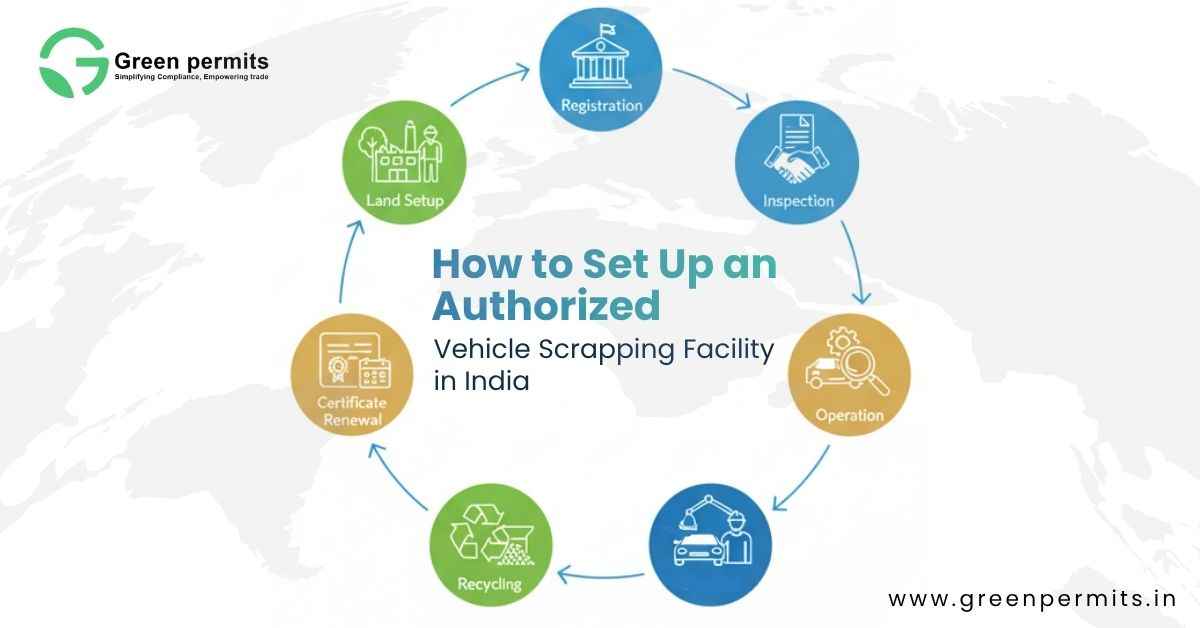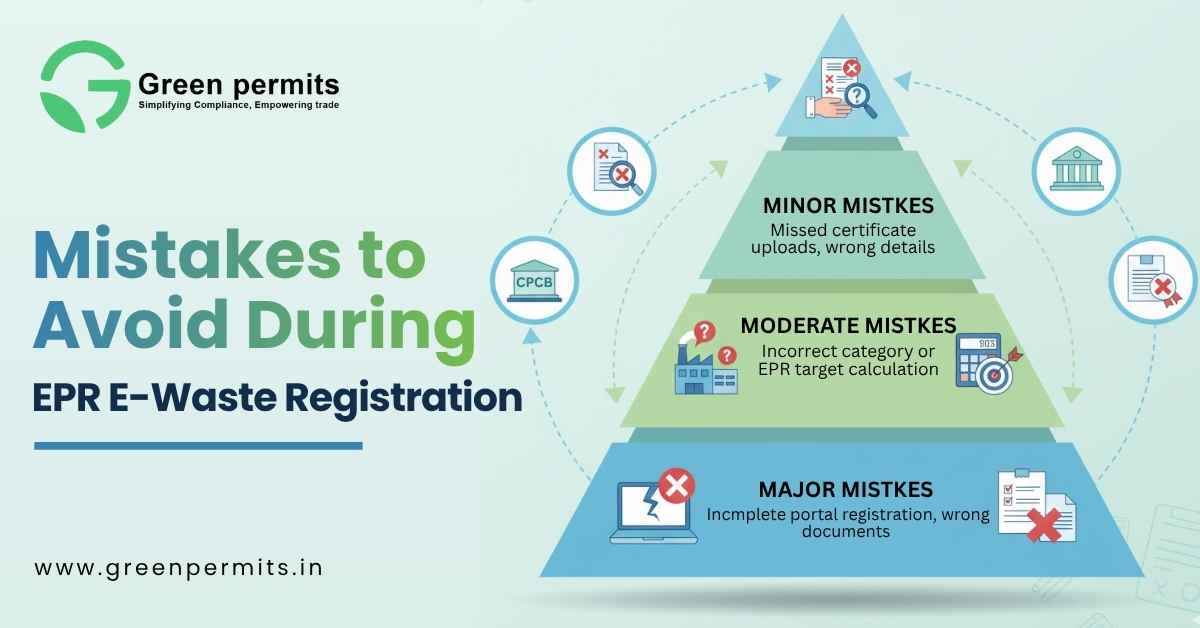When Aarav Motors Pvt. Ltd., a mid-sized auto workshop in Indore, noticed dozens of old vehicles piling up outside their service yard, they saw what most ignored — an opportunity hidden in waste.
They realized India’s new Vehicle Scrappage Policy wasn’t just about clearing unfit vehicles. It was the government’s push to build a greener, more sustainable recycling industry. But as soon as they began applying for registration, they found the process layered with technical terms, environmental clearances, and multiple departments to coordinate with.
If you, like Aarav Motors, want to convert your automotive business into an authorized recycler — this 2025 guide explains everything you need to know to set up a compliant, profitable vehicle scrapping facility in India.
Understanding India’s Vehicle Scrapping Policy 2025
India’s Vehicle Scrappage Policy, launched by the Ministry of Road Transport & Highways (MoRTH), aims to systematically phase out old, polluting, and unsafe vehicles. The policy promotes the recycling of End-of-Life Vehicles (ELVs) in an environmentally responsible way while recovering valuable materials such as steel, aluminium, and copper.
Why It Matters for Entrepreneurs
The scrappage ecosystem is projected to reach a valuation of over ₹10,000 crore by 2025. The government envisions India as a global recycling hub, reducing dependence on imported metals and creating jobs in the circular economy.
Under this policy, Authorized Vehicle Scrapping Facilities (AVSFs) will be the backbone — centers that not only dismantle vehicles safely but also ensure that every step meets environmental and safety standards.
Key Objectives of the Policy
- Reduce pollution caused by unfit and outdated vehicles
- Recover high-value metals for reuse in manufacturing
- Promote eco-friendly dismantling and waste segregation
- Generate new employment opportunities in recycling and logistics
- Support India’s 2070 net-zero carbon goals
Eligibility & Authorizations Required
To set up an authorized vehicle scrapping plant, you must be registered and licensed by multiple agencies. These include the MoRTH or State Transport Department, Central Pollution Control Board (CPCB), and State Pollution Control Boards (SPCBs).
Key Authorizations You’ll Need
| Authority | Authorization Type | Purpose & Validity |
|---|---|---|
| MoRTH / State Transport Department | AVSF Registration | Grants license to operate a scrapping facility (valid for 10 years; renewable) |
| CPCB / SPCB | Recycler Registration | Allows recycling and disposal of waste in compliance with national rules |
| SPCB / PCC | CTE & CTO (Consent to Establish & Operate) | Required for air and water pollution control; valid for 5 years |
| Local Industrial Authority / Fire Department | Land Use & Safety NOC | Confirms zoning, structural, and safety compliance |
Who Can Apply
- Vehicle manufacturers or large automobile dealers
- Entrepreneurs setting up standalone recycling units
- MSMEs or startups under the “Make in India” initiative
- Joint ventures between OEMs and recyclers
You’ll also need a minimum one acre of industrial land and infrastructure capable of handling at least 1,000 vehicles per year to qualify as a formal AVSF.
Step-by-Step Process to Set Up an Authorized Vehicle Scrapping Facility
Step 1 — Select an Ideal Site
Choose a site located in an industrial area or near a transport hub to minimize logistics costs. Ensure it’s away from residential areas and equipped with good road connectivity for easy vehicle movement.
The facility must have a concrete, impermeable floor, proper drainage, and sufficient space for dismantling, storage, and waste segregation.
Step 2 — Apply for Pollution Control Consents (CTE & CTO)
Before construction or operation, you must obtain:
- Consent to Establish (CTE): To set up the unit, ensuring the location and proposed activities meet environmental norms.
- Consent to Operate (CTO): Granted after installation of pollution control measures like oil traps, dust filters, and effluent systems.
Both are issued by your State Pollution Control Board and are mandatory before applying to MoRTH or CPCB.
Step 3 — Obtain CPCB Recycler Registration
Apply online on the CPCB portal with the following:
- PAN, GST, and company details
- Geo-coordinates of the site
- Copies of CTE & CTO
- Photographs and videos of the plant and machinery
- Self-declaration on occupational and fire safety
Once verified, CPCB issues a digital registration certificate valid for five years. This certificate is essential to prove you’re an environmentally compliant recycler.
Step 4 — Register with MoRTH / State Transport Department
After environmental approval, submit your CPCB registration, layout plans, staff details, and safety documents to the State Transport Department.
The department will inspect your site and issue an AVSF license under the National Vehicle Scrappage Policy.
This license integrates with the VAHAN portal, allowing digital verification, deregistration of old vehicles, and issuance of Certificates of Destruction (CoD).
Step 5 — Install Machinery and Safety Systems
A compliant AVSF must include:
- Depollution line: For draining fuel, oil, coolants, and other fluids safely.
- Vehicle shredder or shear machine: For metal recovery.
- Hydraulic baler: For compacting scrap metal efficiently.
- Hazardous waste storage unit: For batteries, oils, and airbag materials.
- Fire and safety equipment: Including extinguishers, alarms, and emergency exits.
This setup not only ensures compliance but also maximizes recycling efficiency and worker safety.
Step 6 — Inspection, Testing & Launch
Your facility will be inspected by CPCB and State Transport Department officials (physically or via video conference). Once approved, your details are added to the National AVSF Directory, and operations can begin.
From here, you’ll be able to issue digital CoDs, process vehicle de-registrations, and sell recovered materials to metal foundries or manufacturers.
Infrastructure & Safety Standards
Setting up a scrapping plant means taking responsibility for environmental and worker safety. Every facility should have:
- Oil and coolant collection systems to prevent ground contamination
- Ventilated dismantling bays and covered storage for parts
- Spill trays under all machinery
- Stormwater drains connected to an effluent treatment system
- Trained staff equipped with PPE gear and safety drills
- Fire hydrant systems and clearly marked emergency routes
Regular inspections and internal audits help maintain compliance and avoid suspension of registration.
Cost, Fees & Profitability of a Vehicle Scrapping Facility
Setting up an AVSF involves both capital and recurring expenses, but the returns can be lucrative.
Capital Investment
- Land & infrastructure: ₹4–6 crore
- Machinery & equipment: ₹5–10 crore
- Pollution control & safety systems: ₹1–2 crore
- Working capital (vehicles, utilities, staff): ₹1–3 crore
Estimated Total: ₹10–20 crore for a medium-capacity facility
Official Fee Structure
| Registration Activity | Fee (₹) | Validity |
|---|---|---|
| New Recycler Registration | 15,000 | 5 years |
| Renewal | 7,500 + ₹0.625/MT (EPR volume) | 5 years |
| Amendment / Profile Update | 3,000 | — |
| Annual Maintenance | 5,000 | Yearly |
Revenue Model
A vehicle scrapping unit generates revenue through:
- Metal recovery – Steel, copper, and aluminium from ELVs
- Resale of reusable parts – Engines, tires, and batteries
- EPR credits – For recycling components like batteries and plastics
- Government incentives – Linked to clean scrap usage and GST benefits
Average Profit Margin: 15–25%
Payback Period: 3–4 years for a standard 10,000-vehicle facility
Environmental Compliance & Risks of Non-Compliance
Failing to register or maintain proper safety standards can result in:
- Suspension of CPCB or AVSF license
- Environmental compensation fines
- Temporary plant closure or prosecution under the Environment (Protection) Act, 1986
Operators must file annual environmental returns and maintain transparent digital records of all vehicles scrapped. Continuous monitoring ensures credibility with both regulators and clients.
Business Example — Turning Waste into Wealth
Take the example of EcoScrap Recyclers LLP, a startup from Gujarat. They began as a small auto dismantler but grew into a full-fledged AVSF after aligning with national standards. With expert assistance, they registered with CPCB, received MoRTH approval, and partnered with vehicle manufacturers to process end-of-life fleets.
Today, they recycle over 8,000 vehicles annually and have diversified into battery and plastic recycling, proving that sustainability and profitability can coexist.
Why Compliance Is the Real Competitive Advantage
For every authorized scrapper, compliance is not just paperwork — it’s a reputation builder.
Proper registration assures clients, automakers, and regulators that your facility operates with integrity and environmental responsibility. It also opens doors to:
- Public sector tenders and OEM contracts
- Carbon credit programs
- Easier bank financing and investor trust
Early movers who secure CPCB and MoRTH approvals in 2025 will have a strong first-mover advantage as the industry scales up.
Conclusion
Setting up a vehicle scrapping facility is one of the most forward-looking business opportunities in India’s green industrial transition. With clear compliance, sustainable operations, and early registration, your plant can become both profitable and purpose-driven.
Start today — because India’s automotive recycling revolution has already begun.
Talk to Green Permits
📞 +91 78350 06182 | 📧 wecare@greenpermits.in
Book a Consultation with Green Permits to simplify your CPCB registration and plant setup process.
Book a Technical Call with Expert
FAQs
Expect ₹10–20 crore depending on automation, land cost, and capacity.
Typically 30–45 working days after submission of complete documents.
Yes, provided it’s zoned for industrial use and has pollution control clearance.
Yes, but only after obtaining authorization under Hazardous Waste Rules.
Legal operations, EPR-linked revenue, brand credibility, and eligibility for state incentives.



